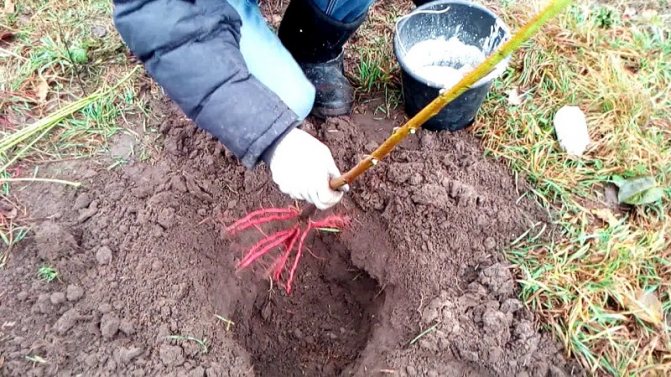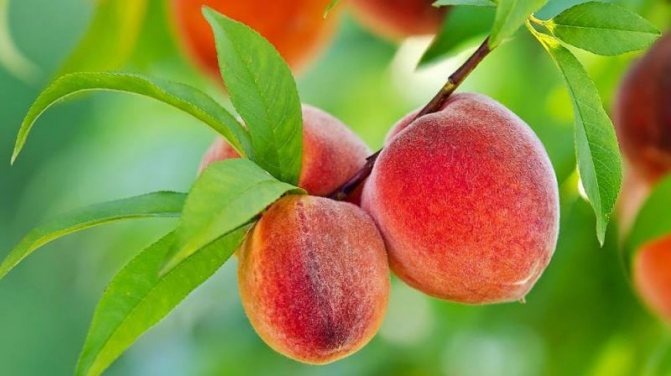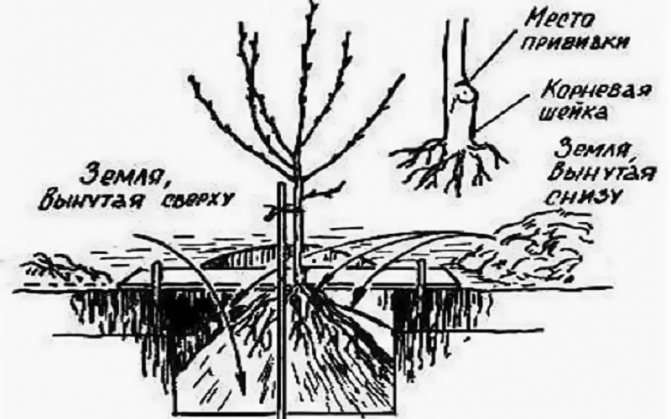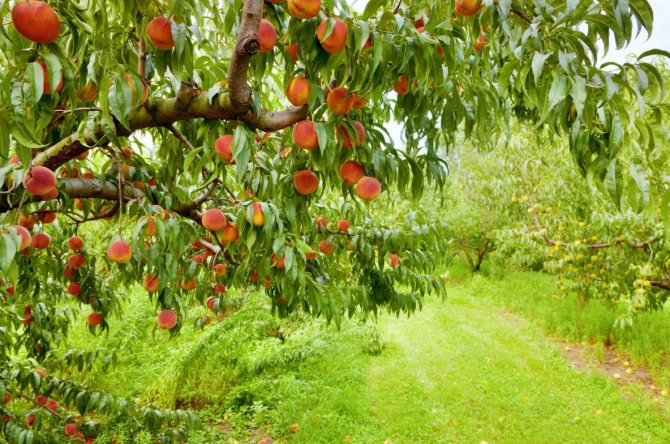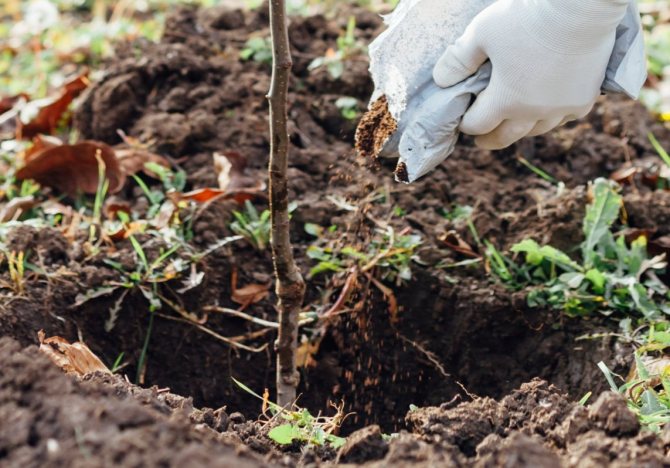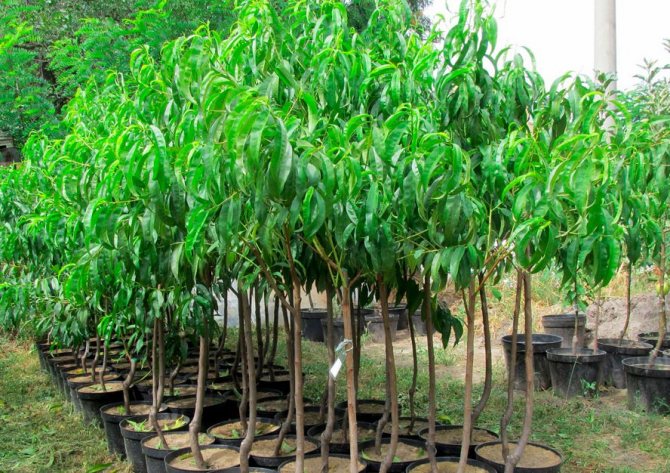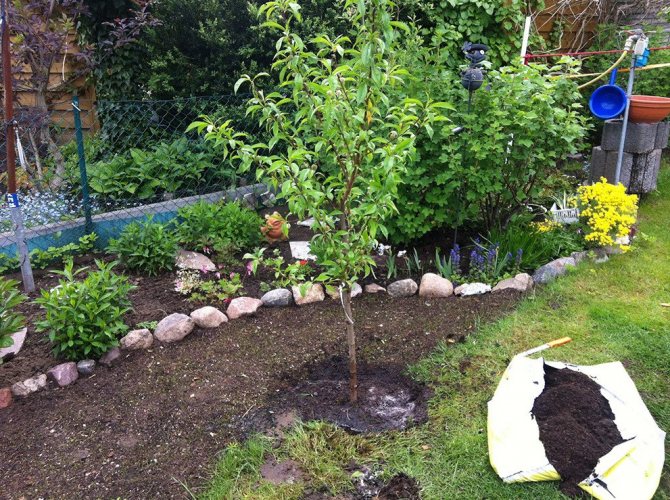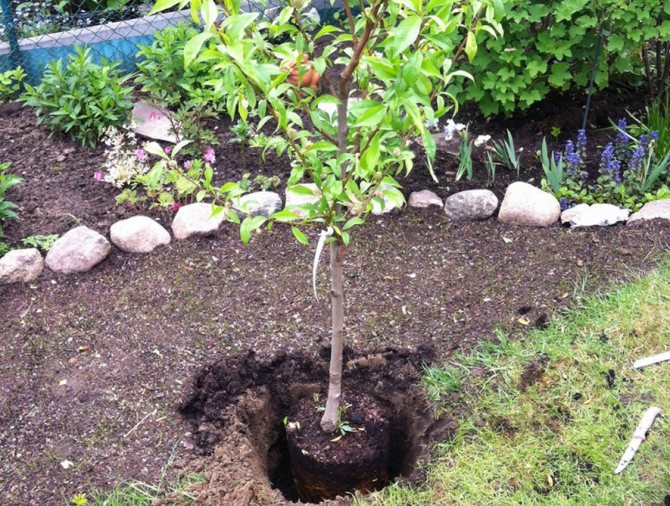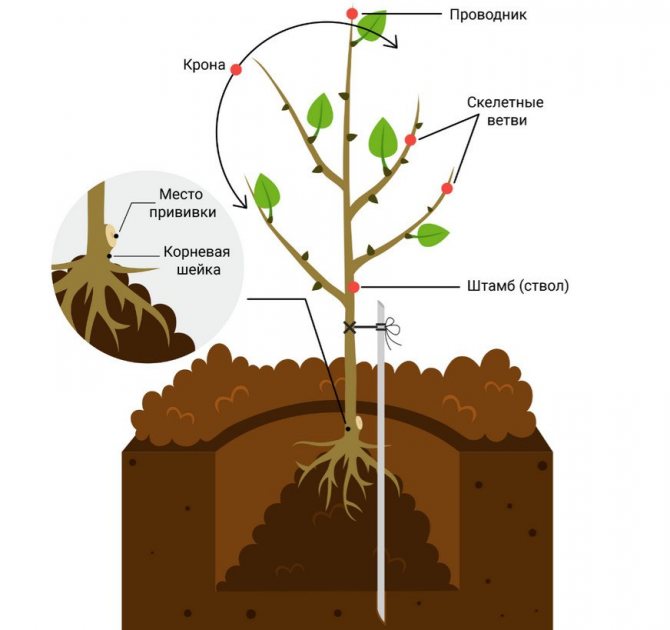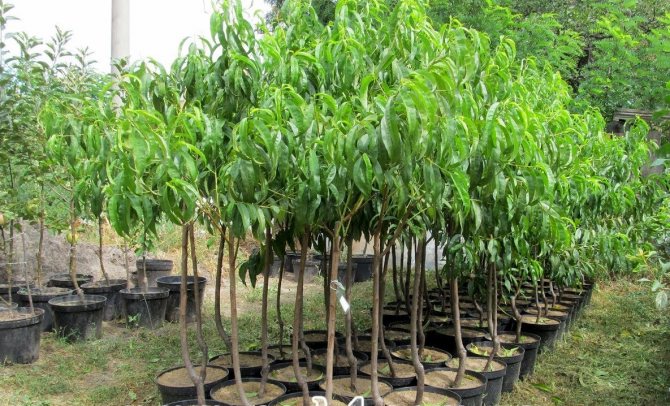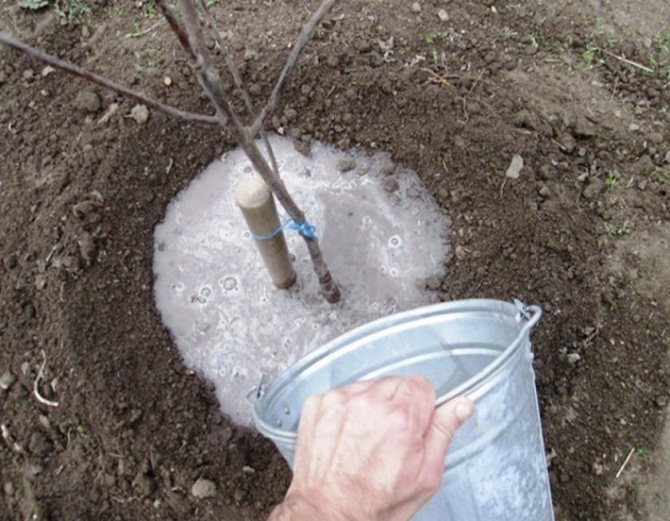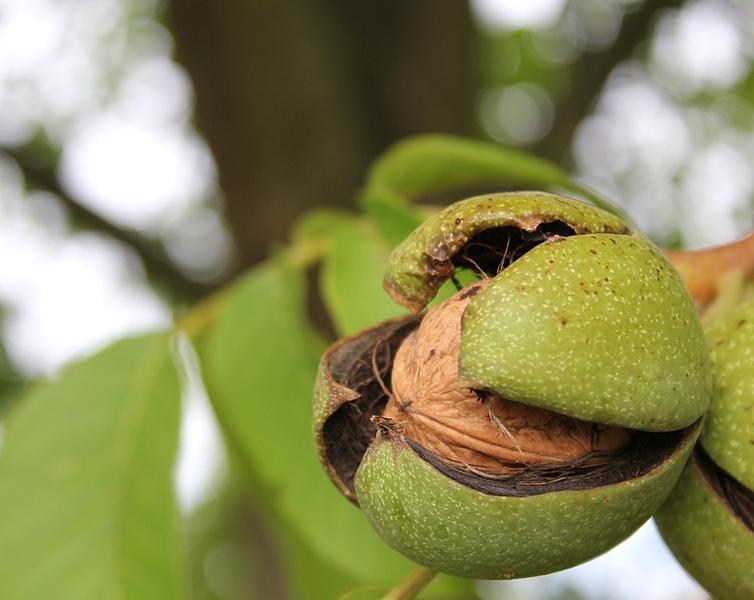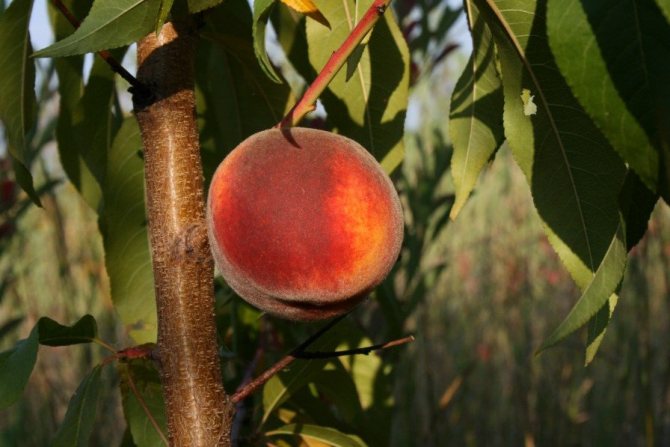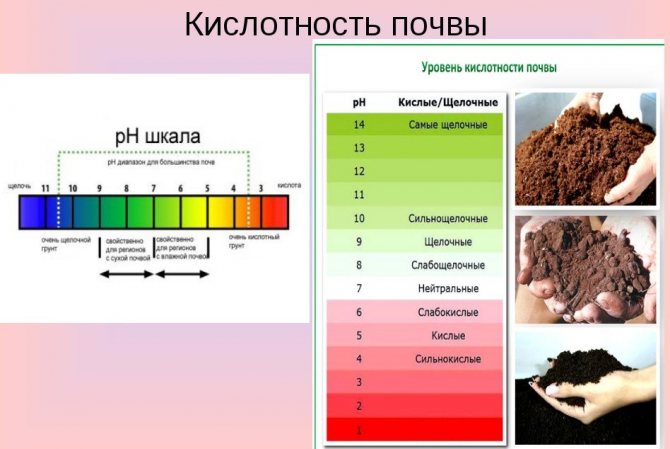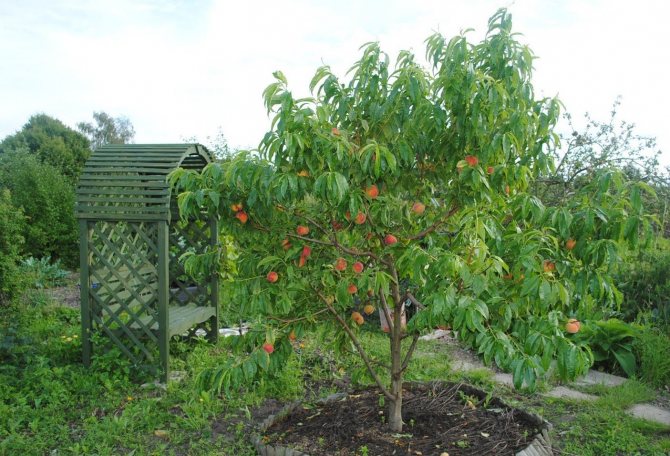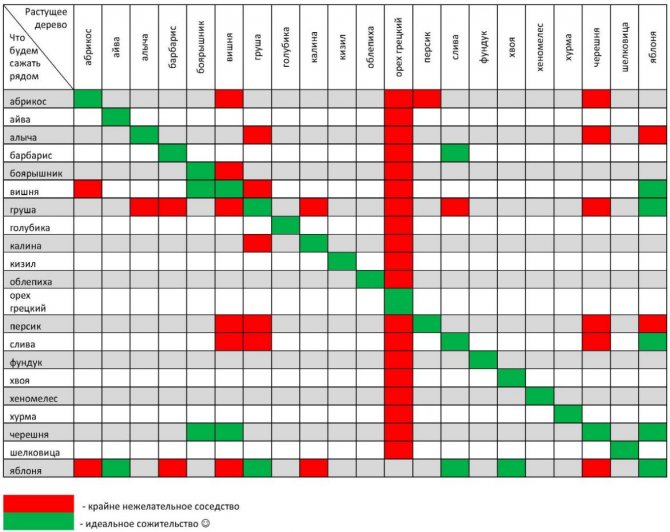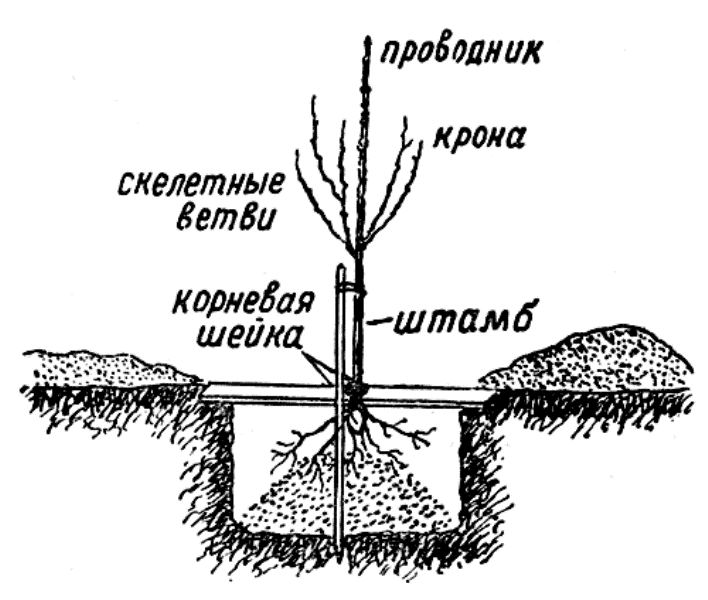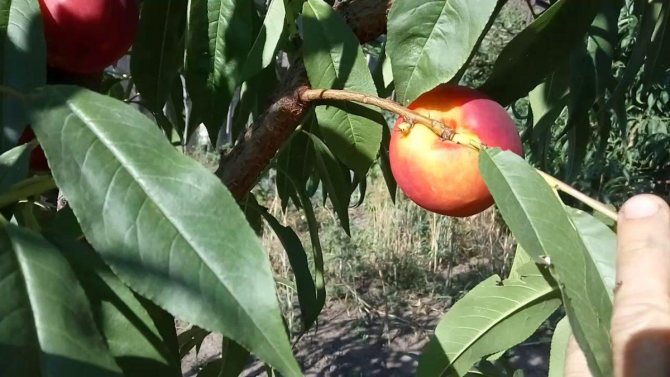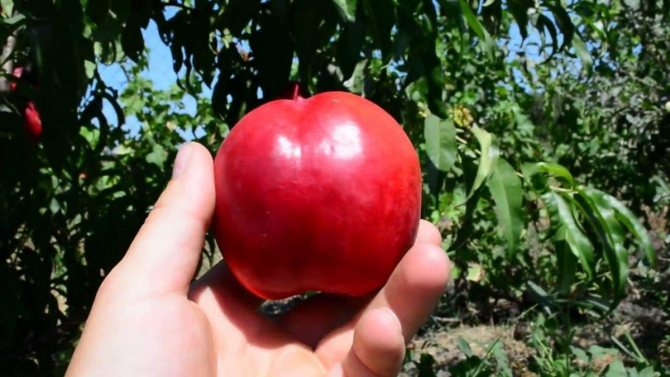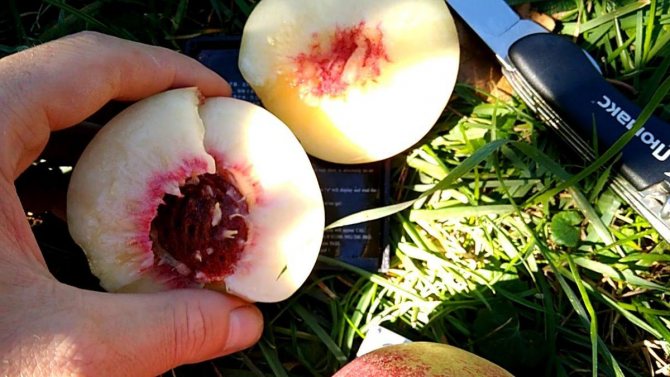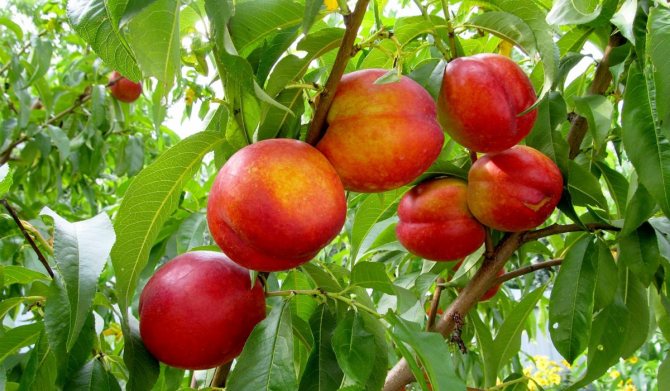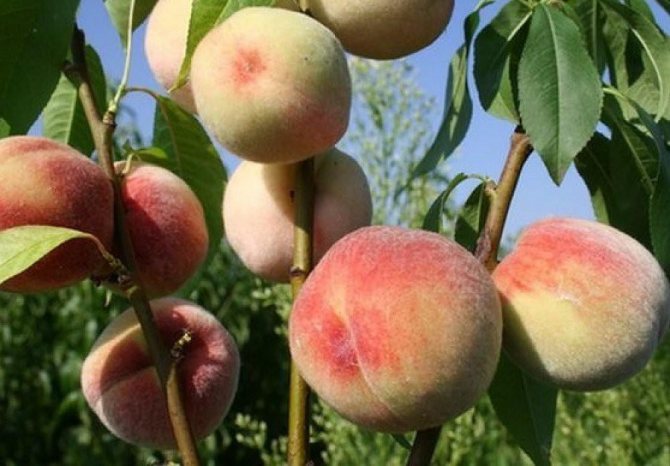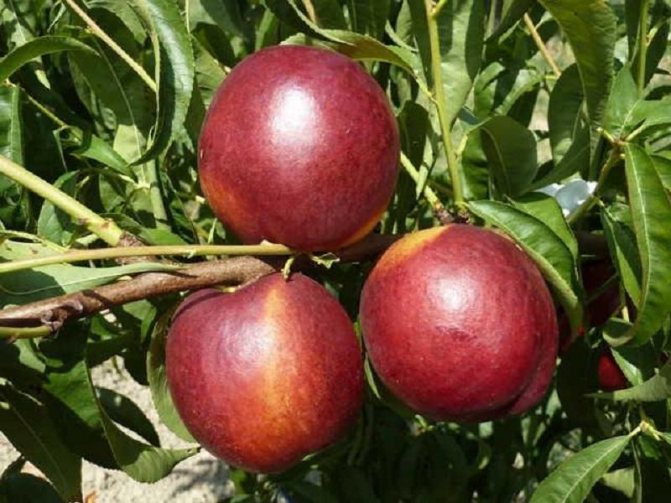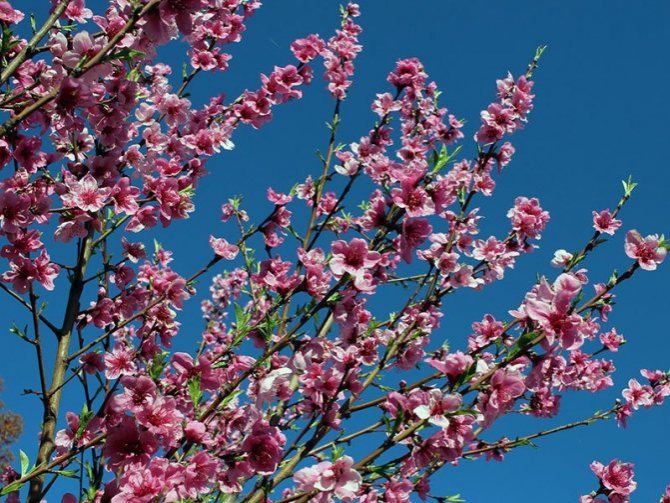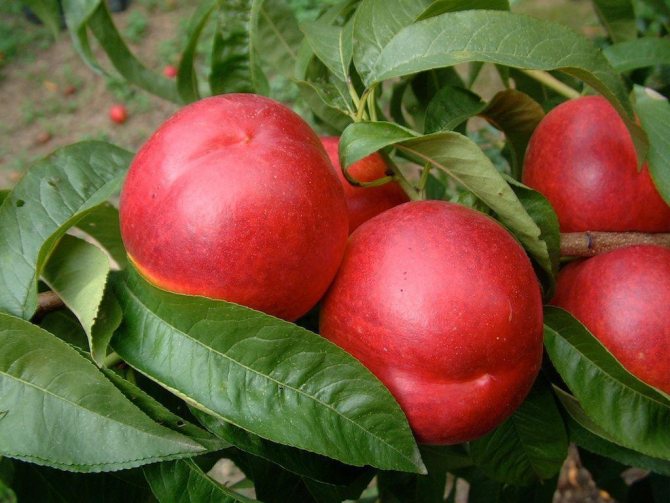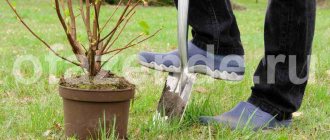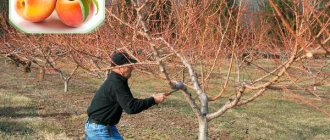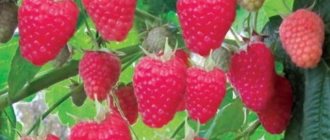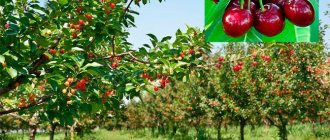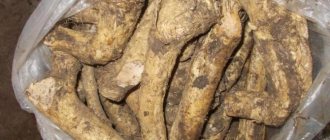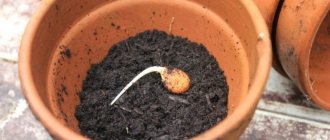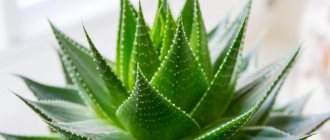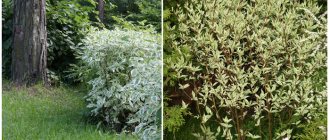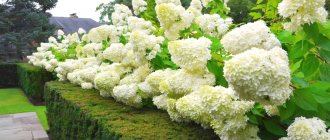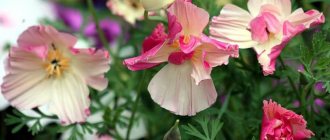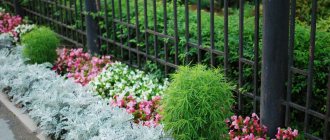Pros and cons of autumn planting
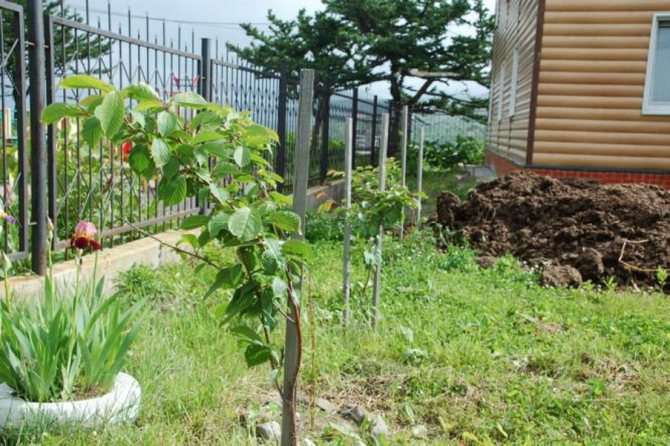
In an area with harsh winters, there is no need to talk about the advantages of an autumn planting, here a peach is planted only in spring. In regions with suitable conditions, there are certain advantages to planting seedlings in the fall.
Pros:
- A young tree planted before winter “falls asleep”. During "hibernation" he is not threatened by pests and diseases. And its roots, having taken root in the fall, continue to develop under the compacted soil. Thanks to good rooting, the tree rushes into growth in spring. Active kidney formation is observed.
- Already in the third summer, the peach tree begins to bear fruit.
- In the fall, the selection of seedlings is greater and the price for them is lower than in the spring.
- Autumn seedlings have leaves and well developed roots. This allows you to objectively evaluate the planting material.
- The tree does not have to spend a lot of energy, like in spring, on the formation of new branches and the growth of leaves. Therefore, the root system, on which the endurance and power of the tree depends, develops poorly. In the fall, the seedling throws all its strength into rooting. The prerequisites are created for the formation of a strong tree with strong immunity.
Minuses:
- The optimal planting time cannot be accurately calculated. The first frosts are unpredictable. They can always appear earlier than expected. And if before this time the seedling did not have time to take root and get stronger, it will not be good for it.
- Even in regions with a favorable climate, unusually cold winters occur, which can be disastrous for a young tree.
Nectarine varieties
Nectarine has been cultivated for many decades. Breeders all over the world have worked to develop new varieties and species. Each region has tried to create a tree that can actively bear fruit in all regions. Early, mid-ripening and late-ripening varieties were developed. This variety allows the fruit to be cultivated in all climatic zones.
Early
Suitable for regions with short summers. The most popular varieties include:
- Fleming Fury - Developed by American breeders, medium-sized fruit with yellow and juicy flesh. Ripens in 90 days.
- Caldesi - scientists from Italy worked on the variety, belongs to the high-yielding. Fruits are medium, soft yellow flesh. The skin is yellow-green in color with a bright raspberry blush.
- Rebus 028 is one of the best Italian nectarines. It is characterized by a high yield, frost and disease resistance. Yellow nectarines with burgundy blush, large. Inside, the pulp is dense, yellow, juicy.
- Big Top Nectarine is the work of American scientists. The fruits are large, the flesh is firm, yellow, reddens near the stone, which is difficult to separate. The skin is bright burgundy.
- Ruby 4 - suitable for industrial cultivation, easy to transport. The fruits are large, covered with a dense red peel, characterized by shine. Inside the nectarine is dense, yellow, the taste is pleasant, slightly sour.
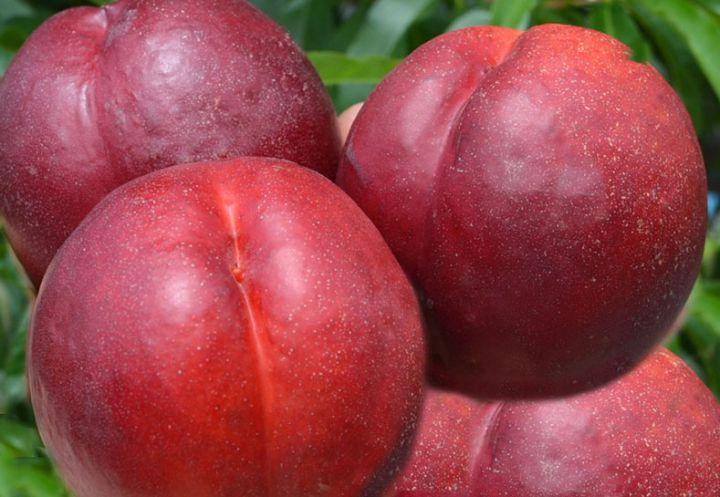

Mid-season
Nectarine varieties with a maturation period of up to 110-120 days. Suitable for cultivation in temperate and southern regions. The most popular types are:
- Ishunsky - the development of Ukrainian scientists. The fruits are medium, covered with a burgundy blush. In section, the fruit is yellow-orange with red veins.Good taste.
- Wang-3 - the variety is characterized by high resistance to frost, diseases and pests, good yield. The nectarines are large, suitable for growing for sale. The skin is thin, dense, bright red. The pulp is yellow, sweet, dense, has a pink tint.
- Harco is a nectarine developed in Canada. The harvest is high, it is immune to most diseases and frost. The fruits are small, the skin is yellow-green, covered with a burgundy layer. The pulp is firm, yellow. The bone is easily detached.
- Alitop is the result of Italian selection. It is characterized by a high yield due to its large fruits. The nectarines are covered with a yellow skin with a bright burgundy blush spread over almost the entire surface. Inside, the fruits are yellow, soft, juicy, sweet in taste.
- Stark Red Gold - American scientists worked on the variety. The fruit is large in size, the skin is red, the pulp is yellow and juicy. The stone is easily separated, a red halo is formed around it.
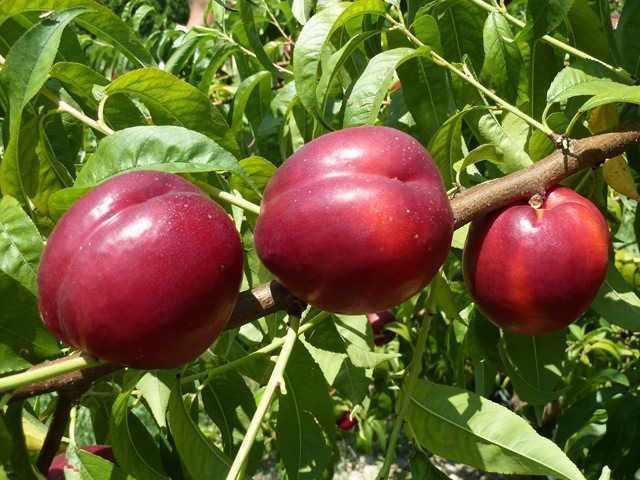

Landing dates by regions of Russia
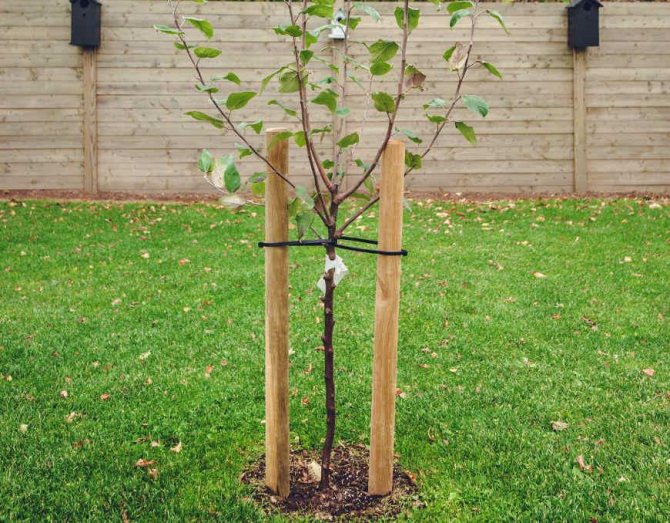

There are no exact calendar dates for the autumn landing. It is impossible to accurately plan the day or even the week of this event. You have to take into account the local climate and focus on the weather situation.
It is necessary to plant a peach so that by the time of planting it has already completed active growth, and the appearance of shoots and leaves would be excluded. At the same time, he should have enough time for rooting.
Landing conditions can be met if:
- Plant the tree after it has thrown off the leaves.
- At least 4, and preferably 6-8 weeks remain before frost.
Planting dates for peaches in autumn by region:
- In the Volga region and central regions of the Russian Federation - the third decade of September.
- In the Rostov region, in the Stavropol region and in the Krasnodar region, in the North Caucasus - in the second decade of October.
- In Crimea - in mid-November.
On a note!
The warmer and wetter the autumn, the later they start planting. If in the region the first frosts are possible in October, it is better to plant a peach seedling in the spring.
Site selection
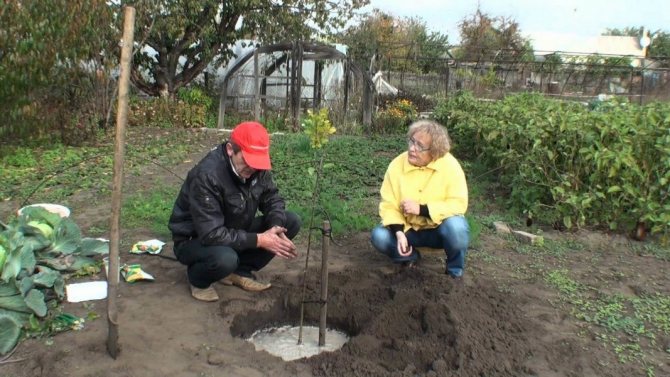

Transplanting an adult peach is not recommended. It does not matter in spring or autumn a transplant is carried out, he tolerates it equally badly. It is necessary to find a place on the site that will meet all the requirements of this culture.
Disembarkation requirements:
- The tree grows best on the south side of the site. There must be a lot of light. The culture is warm and sun-loving, not afraid of heat and drought.
- There should be no drafts, dampness, shading from buildings or trees. Great if there is a fence or hedge on the north side. It is necessary to retreat from the barriers by 2-2.5 m to the south, so that there is room for the development of the root system.
- The site must be dry, with a low level of groundwater. Do not plant peaches in lowlands where water stagnates. Peaches grow well on the southern and southeastern slopes of the hills.
- There should be no fruiting trees nearby, they will act depressingly on a young tree. Also, a plot freed from old fruit trees is not suitable. After uprooting, pests may remain in the soil.
- The best soil for peach is black soil, light loam and sandy loam soil. Salty soil is not suitable. The high carbonate content also negatively affects the growth of the peach.
On a note!
You cannot plant a peach in an area where nightshades, tobacco, sunflowers, strawberries, clover, legumes and melons grew. The seedling can pick up fungus and diseases in the soil.
Preparing the soil and planting pit
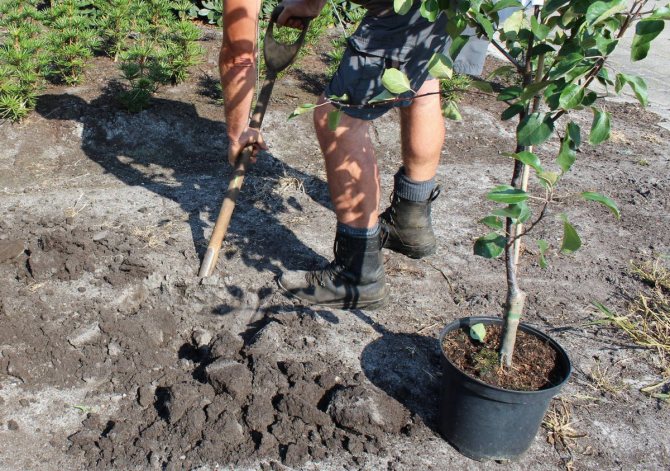

On flat areas, peaches are planted in rows stretching from south to north. On the slopes, the rows are arranged in the transverse direction.
Landing scheme:
- distance between rows - 3-5 m;
- between trees in a row - from 2.5-4 m.
Soil preparation:
- Sow the area prepared for planting peaches with cereals every spring.Oats and rye are most suitable for the role of green manure. They will fill the soil with nutrients and eliminate harmful elements left over from other crops.
- On chernozems, no fertilizers are required. In other cases, a couple of buckets of humus mixed with black soil must be poured into the planting hole. Or, 2-3 weeks before planting, prepare a soil mixture for backfilling into the hole.
To prepare a nutritious soil mixture, take:
- rotted manure - 10 kg;
- potash fertilizer - 50-60 g;
- ammonium nitrate - 80-90 g;
- superphosphate - 140-160 g;
- wood ash - 500 g.
Planting a peach can fail if the soil is not fertile enough, contains a lot of clay, is salty or contains a lot of peat. For reliability, it is recommended to analyze the composition of the soil. This will allow you to find out what the lack of which elements will need to be filled. The missing substances must be added at least a year before planting.
To properly plant a peach in the fall, prepare a place and a hole for planting:
- Clear the area 2-3 months before planting the seedling. Start by picking up debris and weeding.
- Dig up the soil 2-3 times. When digging, select stones, roots, etc. Repeated digging will saturate the soil with oxygen.
- Dig a hole of equal depth, width and length - 50 cm.If the seedling is large, the size of the hole can be up to 1 m.
- Pour the prepared soil mixture into the hole. A hill should form, occupying 2/3 of the planting pit. Pour the entire top layer obtained by digging the planting hole on top. The prepared pit should stand for 2-3 weeks.
Too wet soils are neutralized with drainage. Expanded clay, pebbles or broken brick are thrown at the bottom of the pit. For this case, the depth of the pit is increased by 20 cm.
Where the nectarine grows
The first mention of nectarine was in China in the 14th century. This culture has been cultivated and grown for 2000 years. In Europe, nectarine gained its popularity at the beginning of the 20th century after the development of large-fruited varieties. Currently, fruits are grown for industrial purposes in Cyprus, Tunisia, Italy, Greece.
For growing plants in the Moscow region and Siberia, zoned varieties are used. They are intended for cultivation in central Russia and in the north.
Peach planting methods
Peach growers offer hobby gardeners two methods of planting peaches. There are no special recommendations for choosing a particular landing method.
Planting methods:
- "On the cone". This technology provides good survival rate. The seedling is placed on a cone-shaped hill, poured into a hole. Hence the name. The disadvantage of this method is the risk of damage. A thin sapling can damage or even break the wind. It can also deform due to soil subsidence. To avoid this, the seedling must be tied to a reliable support with twine.
- "I'm in a slurry." Unlike the previous method, this planting can be done without assistance. Soil and water are poured into the pit so that a soil of a liquid consistency is obtained.
On a note!
When planting "on a cone", the soil around the roots must be well compacted so that there are no air gaps between the roots.
Gardeners reviews
Milim, Saint Petersburg
I first arrange a "steam room" (heat and humidity) for my seeds, usually without light, and after they ascend, I put them on the window into the light, but without a "steam room".
Chereshenka, Donetsk region
It is impossible to allow both drying out and waterlogging of the soil, in the open field it is difficult to follow this, the optimal moisture content of 70% must be maintained.
Step-by-step description of landing
If the pit is properly prepared, and a nutritious soil mixture is poured into it, the planting procedure will not cause difficulties. You just need to prepare standing water and a suitable support.
Step-by-step instructions for classic planting of a peach ("on a cone"):
- Step back from the center of the hole and drive in 1-2 supports that will support the peach in strong winds. This must be done before planting the seedling. Otherwise, you can damage the roots of the tree.
- Pour 5-10 liters of water into the pit. Displacement depends on the size of the pit. Wait for the soil to completely absorb the water.
- Set the peach on top of an earthen mound, gently spreading the roots. The deepening of the tree should be such that the root collar is 3-4 cm higher than the soil level.
- Keep the tree straight. It is good if you have an assistant who will hold the seedling. Cover the roots with soil to the very edge of the planting hole.
- Water the seedling with a bucket of water and compact the soil a little in the tree trunk circle. Be careful not to break or deform the roots.
- Having retreated half a meter from the center of the hole, make a soil shaft so that water does not pour out of the trunk circle during watering. The height of the shaft is at least 10 cm.
- Sprinkle the soil around the trunk with mulch - pine needles, sawdust, shavings. Peat, rotted humus, ground bark, fallen dry leaves. The layer should be 5-10 cm thick.
- Tie the peach to the supports.
Step-by-step instructions for planting a peach "in a slush":
- Pour 1.5 buckets of water into the prepared planting hole (filled with humus or soil mixture).
- When 50% of the water is absorbed, begin to fill up the fertile soil. Pour until the pit is full. It will take about a bucket of soil.
- Bury the roots of the seedling in the resulting "chatterbox". The consistency of the soil should be watery. The roots will anchor well in it, and each root will fit comfortably in the viscous substance.
- When the seedling is firmly and evenly set, water it again.
- Throw mulch around the trunk.
Attention!
Do not use straw as mulch. Mice can start in it.
For a detailed guide to planting a peach in autumn, with an explanation of all the nuances, watch the video:
How to transplant a peach in the fall
Transplanting a peach in the fall to a new place is carried out only if absolutely necessary. This is an unwelcome event. The tree may not take root, or its growth will slow down, it will weaken, lose its yield.
You can transplant a peach before it reaches the age of seven. Better to do it before 5 years. Then there will be more chances for successful rooting. The peach is transplanted in late autumn, when the tree has stopped growing and is ready for wintering.
Choosing a seedling
No matter how favorable the climatic conditions for growing a peach, it is naive to believe that growing a healthy tree will come from any planting culture. To get good harvests on a regular basis, you need to choose the right seedling. How to do it? Consider below:
- The tree of this culture is best purchased at a local nursery, which has proven itself well.
- Inspect the seedling carefully before purchasing. Make sure the tree is dormant. This can be determined by the following signs, the shoots are completely covered with bark, and the buds are fully formed.
- Buy peach varieties that are adapted to your region. By the way, experienced gardeners are advised to buy the planting material that was bred in Ukraine.
- If you are a novice gardener, then it will be optimal for you to purchase planting material that is two years old. The height of such material will be 5 meters, and the thickness of the trunk will be 2.5 cm. At the same time, the young growth should have at least 4 branches.
And, of course, pay attention to the appearance of the planting material. He must be healthy and strong. If the foliage of the tree is wrinkled, and the bark is peeling, then it is better not to acquire such a tree. Since the chances that it will take root are small.
Care after landing
Peach is considered almost the most capricious and demanding fruit tree. The planted seedlings must be looked after throughout the next season.They will need to be watered, cut, fed.
After the autumn disembarkation, it is required to carry out the following activities:
- trimming;
- whitewash;
- shelter for the winter.
Pruning after planting:
- find the 3 strongest side branches and shorten them by a quarter;
- cut off all other side branches completely;
- sprinkle the places of the cuts with crushed coal and brush with garden varnish.
After pruning, whitewash the seedling with a lime-fluff solution. A layer of lime protects the plant from frost damage and premature bud development. And if the shelter is not complete, then from sunburn.
Shelter methods for the winter:
- Wrap the tree with burlap. Place a 20 cm layer of soil near the trunk.
- Place a cardboard box on the tree. Top with a layer of hay or straw.
- Build a hut. Stick two sticks on the sides of the peach and place the bag over them so that the whole tree is inside the bag. Secure the bag with staples to keep it from being blown away by the wind. Such a "hut" will protect the tree not only from cold and snowstorms, but also from rodents - mice, hares, etc.
As soon as snow appears, it is shoveled over the wrapped tree. The snow layer will protect the peach even in the most severe cold. In the spring, the shelter must be removed in time so that the peach does not sniff. Do this as soon as stable heat is established.
Attention!
Only breathable material can be used for shelter. It is prohibited to use polyethylene film.
Possible mistakes
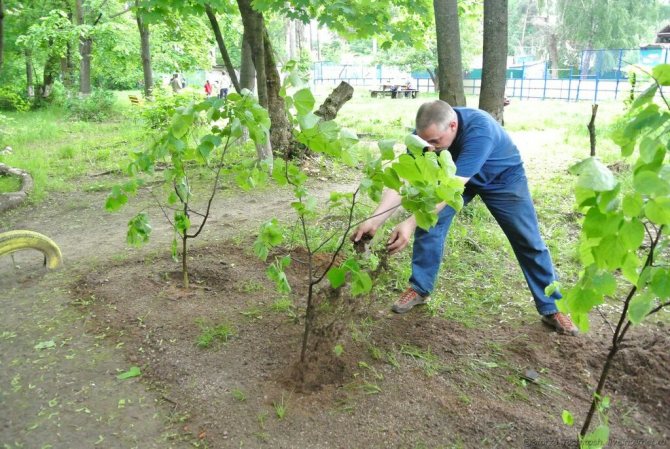

While planting fruit trees is no big deal, even a small oversight can be fatal. Beginners rarely manage to complete the entire procedure without errors.
The most common mistakes are:
- Overkill with mineral fertilizers. With the best of intentions, novice gardeners generously pour superphosphate and other fertilizers into the pit. Because of this, beneficial bacteria are killed, which are necessary for the processing of minerals into a form that can be assimilated by plants.
- Late pit preparation. If you do not prepare the hole in advance, the soil will subsequently settle and the root collar will be very deep. This slows down the development of the tree.
- Planting non-zoned varieties. Such a mistake can be fatal. The tree will freeze or even die in one of the harsh winters.
- The timing is wrong. Early and late planting is equally detrimental to the seedling.
- Planting a seedling that is too old. A tree that is more than 2 years old takes too long to take root and develops poorly.
If you decide to plant a peach in the fall, then the most difficult and important moment in this event will be the right choice of planting dates. All other manipulations are not difficult, even a novice gardener can easily cope with them.



